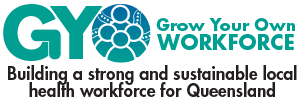Outside-in guide
What is an outside-in approach?
In general terms, an outside-in approach is when an employer looks to fill a position with a suitable person outside the business. A Grow Your Own (GYO) outside-in approach is focused on increasing attraction, development and inclusive employment opportunities specifically for locals. In many instances, local job seekers may have otherwise faced barriers to employment. An inclusive recruitment approach allows and encourages people of all working ages, and socioeconomic and cultural backgrounds, to participate in paid work and provides a framework for their development.
The following are core elements for building successful outside-in programs:
- organisational-wide support for the program
- collaborative partnerships with workforce intermediaries to better connect with local residents
- a well-considered program design that can be measured and evaluated
- a central coordination mechanism to drive the program and link stakeholders
What does it involve?
An outside-in approach involves a set of strategies. Since health service providers vary in size, capacity and location your approach may not necessarily involve all of these strategies. The intent is to provide you with ideas and for you to select the strategies that may work best for you.
1. Organisational strategies
- Educate managers, department heads and others with recruitment authority about inclusive local employment goals and empower them to make program decisions.
- Connect forecasting, training and recruitment departments as part of a GYO taskforce.
- Provide those with recruitment authority with training to better support new hires.
- Evaluate the organisation’s success at meeting local recruitment goals by including it as a key performance indicator (KPI) for those with recruitment authority.
2. Partnership strategies
- Identify potential community partners who share an understanding of the problem that needs to be resolved (e.g. high youth unemployment) and a common agenda to work collaboratively to address it.
- Connect with a local council or chamber of commerce that is keen to maximise local economic development outcomes and who may be able to commit financial or human resources to support the program. Make use of their economic development research data, which may include information about the characteristics of the region (population, education and training, transport access etc).
- Partner with local schools, registered training organisation and /or a university to deliver training.
- To source a diverse range of candidates from the widest possible talent pool, link with jobactives or not-for-profit groups focused on job placement, or a community group focused on serving particular populations such as Aboriginal or Torres Strait Islander job seekers, or migrant and refugee communities.
- Collaborate with other local health service providers with similar skill needs to develop a larger training cohort and reduce training costs.
3. Program design strategies
- Raise awareness of health career pathways by holding events such as career days, Health Inspirations workshops and / or health career camps. Consider collaborating with other health, training and education providers in the local area to share resources, reduce costs and maximise engagement outcomes.
- Boost interest in health careers by developing a paid internship program with genuine pathways to permanent employment. Partner with local schools and vocational education training providers to recruit students for internships and introduce them to a healthcare environment. Offer internships at different entry points, provide on-the-job training, mentoring, employment opportunities during their holidays, a separate application pathway to employment, and guaranteed interviews.
- Create a cohort training model focused on specific, high-need positions to achieve economies of scale and reduce training costs.
- Collaborate with workforce partners to collect data, track success and measure impact.
It is important to note that this is only a guide. It would be wise to consider an outside-in approach in tandem with other workforce strategies as it may not be sufficient to meet workforce demand on its own.
Designing an outside-in local recruitment program

Acknowledgement: The Democracy Collaborative, workforce toolkit for hospitals and health systems inspired and informed the Outside-in / Inside-up concepts and resources featured on this website. See: http://hospitaltoolkits.org/
Designing an outside-in local recruitment program
This interactive infographic provides links to useful resources, case studies and contacts.
Acknowledgement: The Democracy Collaborative, workforce toolkit for hospitals and health systems inspired and informed the Outside-in / Inside-up concepts and resources featured on this website. See: http://hospitaltoolkits.org/
